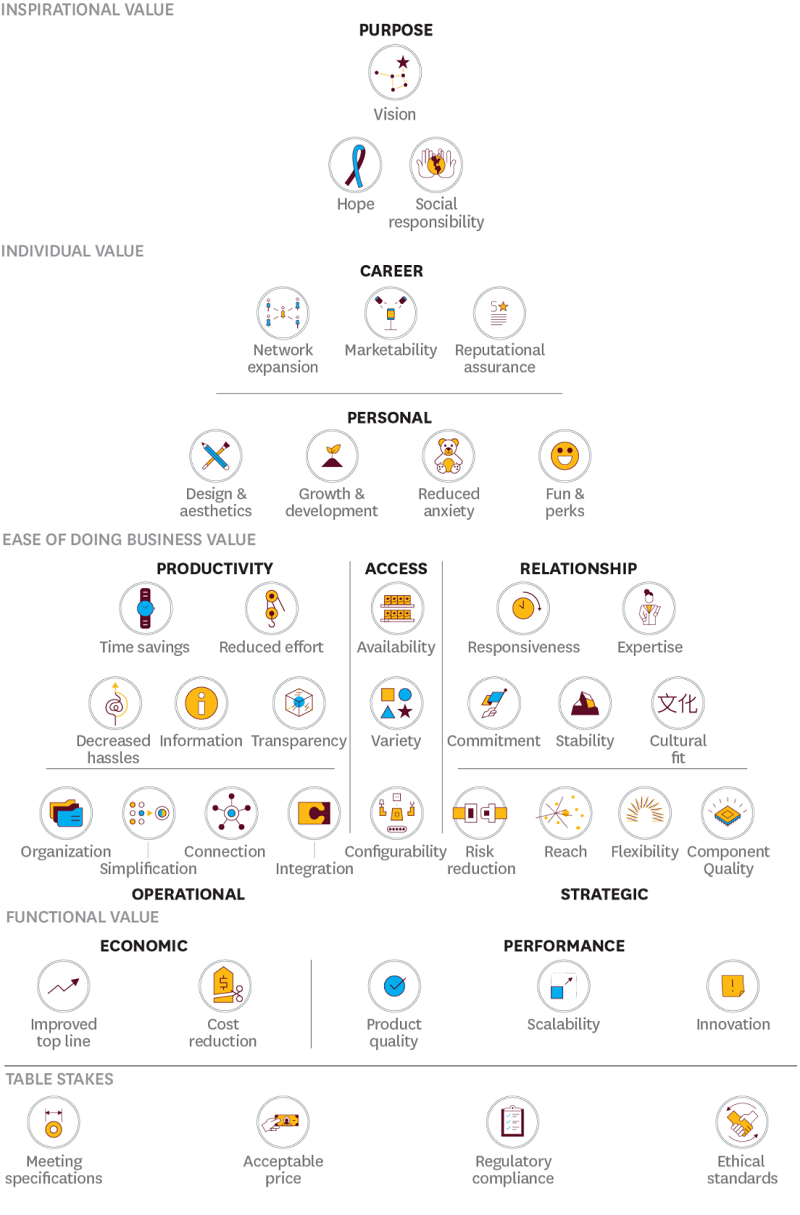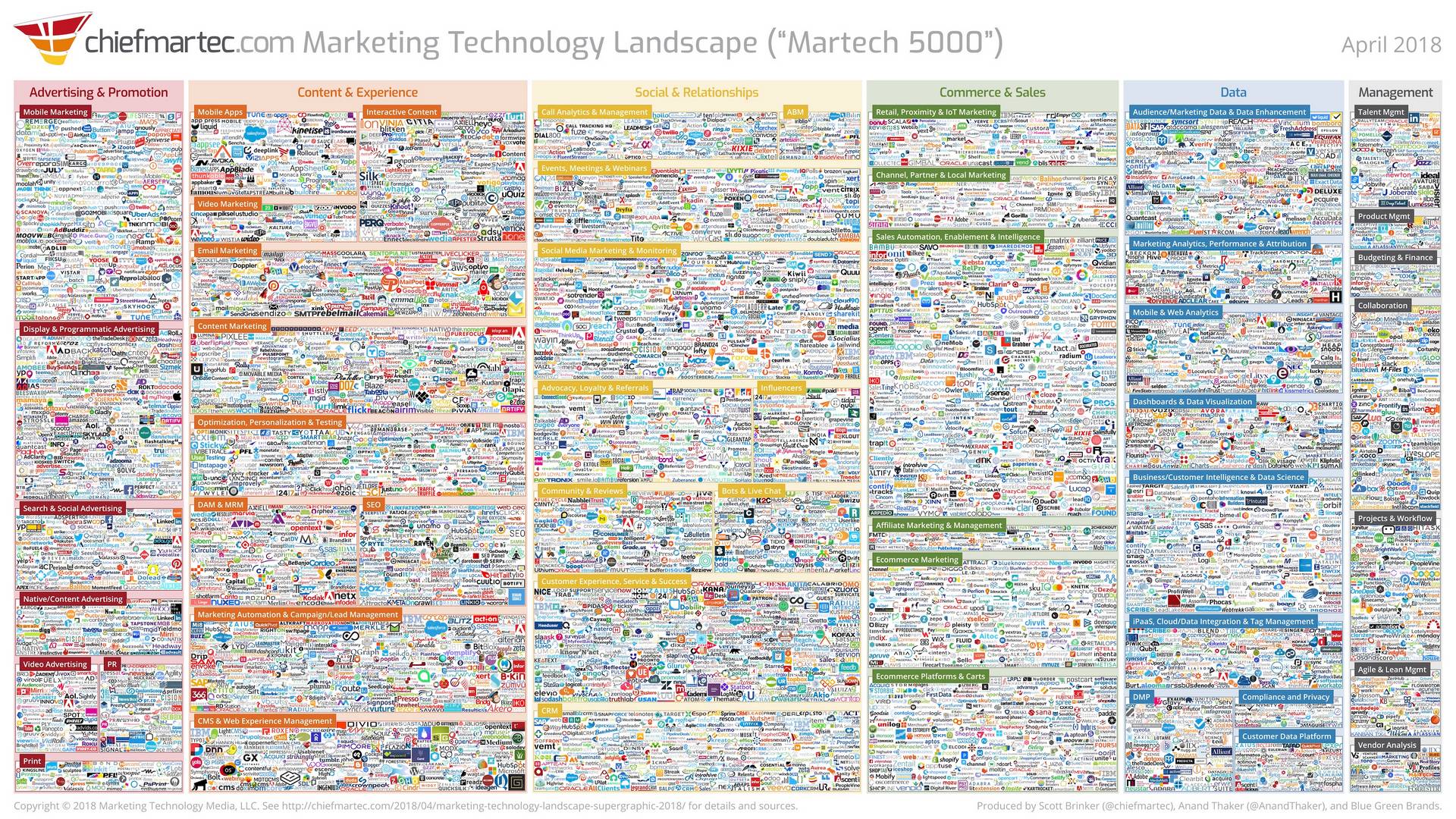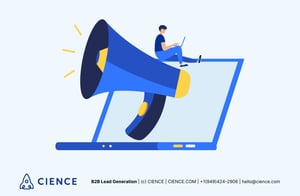B2B Buying Analysis Paralysis: The Hardships of a Decision-Maker in the Era of Information Abundance
In their What Sales Should Know About Modern B2B Buyers, Gartner reminded us of how overwhelming the buying process might be, especially for a company’s decision-makers. At times, the purchase experience is frustrating to the extent of regret and even refuse to close a deal. Our CMO, Eric Quanstrom calls this situation “buying analysis paralysis.”
We’ve all been in these shoes: from picking a chocolate bar to purchasing a house or planning a holiday with our family. For many of us, selecting a school for children, deciding on medical insurance or cheap auto insurance, arranging a wedding or buying on Amazon were some of the most complex experiences in life. Ironically, most of these activities should bring joy.
We should be happy to get married, to give education to our kids, to get quality medical assistance or to wear one of those “call-me-maybe” T-shirts. But for some reasons, we aren’t. More often, than not we regret our decisions. And things get only worse when it comes to purchasing for our company.
The abundance of information can be as debilitating
as having not enough
Modern people are overwhelmed by it, as well as by the number of options on the market. In fact, the reasoning coupled with emotional engagement in a decision-making process can take all the resources from us. However, there are ways to overcome it.

Three dimensions of buying analysis paralysis
Analysis paralysis denotes a situation in which a person received too much information on a problem and can’t process it. He or she lacks resource, and as a result, stops any activity related to it. From a buyer’s point of view, there are three similarly overwhelming circumstances – the dimensions of buying analysis paralysis:
- Vertical – there’s the difficulty of estimating a product or a service
- Horizontal – there’s the problem of choice between many (or two) similar offers
- Internal – the desire to pick the perfect option along with the fear to fail.
In most situations, buyers experience and suffer all of them. They have multiple alternatives, and they need to analyze each to understand the difference between them. On top of it all, the decision-makers have their vision, expectations, and emotional response to the situation of choice.
In B2B, the situation gets even more dramatic, because products or services are much more difficult to analyze. Moreover, the choice influences the decision-makers’ work, relations with top management and colleagues, social status, image, and career. As a result, B2B buyers suffering buying analysis paralysis (unknowingly) suspend deals and the growth of their companies. The status quo is a quite, comfortable force.
To tackle this problem, we need to understand the psychological drivers that makes it hard for people to proceed with reasoning and finally decide.
The difficulty of making a rational choice
The story is as old as human civilization. One of the first mentions of the analysis paralysis (Aesop’s fable The Fox and the cat) dates back to 7th century BC. However, it had been known long before in different parts of the world. The story depicted two animals who were to escape hunters.
- The fox knew many ways to flee. However, when the danger came, it failed to choose one and got caught.
- The cat, on the other side, had mastered a single method. It applied it and survived.
The fable demonstrated how the tendency to think coupled with the excess of choice could inhibit action.
The first to consider analysis paralysis with a somewhat “buying” approach was Persian philosopher al-Ghazali. Unlike Aesop, but similar to Aristotle, he was pretty sure that a person could make a choice between two equal goods.
Buridan believed in the very opposite, stating that an ass will surely die of thirst and hunger when put in front of food and water. Voltaire agreed with Buridan, though he reviewed the problem from a different point of view. He said that perfection is the enemy of the good.
In our opinion, however, all these approaches had one major drawback. They recognized a person as an entity of mind and will. They never took into account the emotions and many different motives.
Emotions impacting choice
In the modern century, the decision-making process became the province of psychologists and economists. For example, Kurt Lewin included the Buridan’s ass problem of choice between two equally desired things in his conflict triad. Other conflicts include the alternative of two unpleasant things and an option which has both unwanted and wanted consequences.
One of the most important achievements of this period was introducing the new psychological constructs that govern decision-making process. These are uncertainty tolerance, cognitive dissonance, and regret. All these constructs contain a strong emotional response to the situation of choice. Thereby they explain why some people fall into analysis paralysis.
Indeed, our feelings severely impact our thinking and behavior. That’s why we should never underestimate them when we analyze the buying process. Although in the B2B model, companies are the main parties, yet humans still make the decisions. So buying is always the province of intrapersonal conflict and the clash of individuals rather than legal entities.
There’s one more contributor, whom we can’t omit in this retrospective. The Noble Prize Winner Daniel Kahneman spent many years studying cognitive biases and how they impact the decision-making process. And he proved that this process in humans is irrational.
This also means that previous purchase experiences shape current evaluations– even if they have nothing in common with the product or service being evaluated.
Perhaps the most underappreciated detail in any sales cycle (by salespeople)
are a buyer’s previous buying experiences.
Kahneman studied mostly the decisions that were made, but we can take something useful from his theory for the present article. However controversial this thought might be, we believe that it’s the irrationality and fast-thinking system that help some people overcome analysis paralysis.
Buying analysis paralysis
There are several aspects in this problem, each contributing to the stagnation of making a choice. Let’s review them one by one.
1. According to Gartner, 83% of buyers consult the digital channels at every stage of a purchasing. Apart from the fact that they don’t trust sellers, it literally means that decision-makers gain an overwhelming amount of information, while you pull them through the sales pipeline.
2. Unless a product or service just hit the market and is thus unique, there’s commoditization. As a result, of all the offers on their plate, buyers will at least have at least two different, but equally beneficial options. And they will most likely regret once they pick one (aka Buyer’s Remorse).
3. Although we want to see the purchasing decision-making process as the choice between several equally desirable and competing offers, it’s much more complicated. Each buyer also has the inner conflict between the wish to acquire and the fear of unwanted consequences.
4. The decision-makers have a hierarchy of values, both corporate and personal. Apparently, buying analysis paralysis can occur when they try to estimate whether an offer can contribute to this set. Bain has done a nice job of visually ranking these B2B Values:

5. For B2B buying process, there’s the problem of consensus decision-making. Gartner calculated that the average purchasing group consists of 6.8 people. Apart from all the inner conflicts of each group member, there’s also the so-called collective mind that is also susceptible to the paralysis of analysis.
6. The pace of technology development coupled with the limitedness of time puts extra pressure on B2B buyers. If procurement isn’t their responsibility in a company, there’s much on their plate every day. However, the necessity to study new options takes their valuable time. And after spending hours on evaluation similar products and services, they feel exhaustion and the desire never to do it again.
As a result, we get a very frustrated group of personalities torn apart by a variety of conflicting thoughts, desires and emotions and overwhelmed by the abundance of information in the digital era. It’s something a seller need to tackle.
Impact of buying analysis paralysis on business
The CMO of CIENCE, Eric Quanstrom:
Too much information functionally means (for most sale cycles) that people will fall back to the status quo. If I have too much information, I drown in a sea of nothing. I don’t do anything. I don’t change or adapt. As a result, I don’t move forward. We call it analysis paralysis.
The price can be high–and we’re not necessarily talking dollars. We live in the era of constant technology development and fierce market competition. Miss an opportunity to improve your business or cut your expenses, and you’ll miss out. The pace is constantly increasing. However, the decision-makers aren’t ready to the pressure.

We are pretty sure that all the tools from the picture above have been designed to facilitate the work of marketing and sales departments. However, we can hardly imagine the amount of time necessary to at least open all 6,289 of the websites of these companies, not to mention reading and comparing them… Then initiating a buying cycle.
On the flipside, if marketing teams don’t adopt best-of-breed tools, they’ll spend several hours per week doing some routine and tedious work. Plus, they’ll likely be missing out on better, more efficient ways to run their organization(s). In a year’s perspective, this equates to numerous valuable working days. Furthermore, doing a job that can be done better and faster by a machine is emotionally draining, especially for creative employees.
Tackling buying analysis paralysis
The critical question is how to overcome analysis paralysis. Here are some tips that we hope will be valuable to you:
1. Know your enemy:
- acknowledge buying analysis paralysis
- monitor yourself when you experience it and try to recall the sensations you had prior to it
- try to estimate the amount of data you’ve processed to find out how much information drains you
- try to understand which factors stress you most: volume, the necessity to choose, some emotional triggers, social pressure.
What you experience during buying analysis paralysis is actually exhaustion of your brain. It can’t work all the time at maximal productivity. As a result, you might experience fatigue, dizziness, inability to think at all.
2. Prevention
The best way to solve a problem is not to let it happen. Since you know the factors that cause buying analysis paralysis, you can control them:
- reduce the amount of information you process per day
- make a table that contains the names of the companies, the options you think are important to you and additional features in an offer, prices, and other relevant data
- ask for help from a colleague
- use the Descartes square
- set the priorities
- acknowledge that you won’t ever get a 100% guarantee
- remind yourself, that not changing is worse than giving it a try
- keep in mind that there are no perfect options
- start processing the data with a fresh head
3. Overcoming
If you’re experiencing buying analysis paralysis, there are several things you can do about it.
- Admit losing a battle, but not the war
- Follow Scarlett O’Hara’s principle (“I’ll think about that tomorrow”) – and set the date when you get back to the evaluation of a purchase
- Replenish your resource (reading, spending time with your family or friends, a night ride, a concert – anything that makes you happy)
- Don’t think of purchase during your “rest.”
- When you return to your estimation, use the tips for the prevention of buying analysis paralysis.
The break will help you overcome the brain exhaustion. Furthermore, it will also give time for your subconscious to process the problem for you. And the result might surprise you in a most pleasant way.
***
Buying analysis paralysis is one of the most unpleasant experiences of the modern corporate decision-makers. However, a proper approach can diminish the damage and help you overcome the obstacle. Furthermore, competent sellers can anticipate this problem, prevent it or assist you in handling it.
A Few (Related) Sales Posts
 Read full post: Buyer's Journey: Building the Right Path in B2B Sales
Read full post: Buyer's Journey: Building the Right Path in B2B Sales
Buyer's Journey: Building the Right Path in B2B Sales
 Featured image: 7 Ways to Boost B2B Customer Loyalty - Read full post: 7 Ways to Improve B2B Customer Loyalty in 2024
Featured image: 7 Ways to Boost B2B Customer Loyalty - Read full post: 7 Ways to Improve B2B Customer Loyalty in 2024


 Read full post: Recognizing and Responding to B2B Buying Signals
Read full post: Recognizing and Responding to B2B Buying Signals